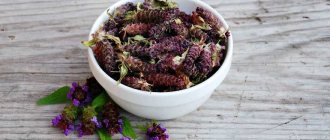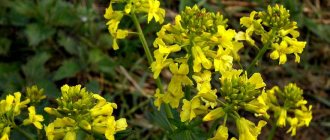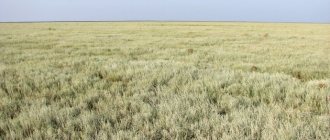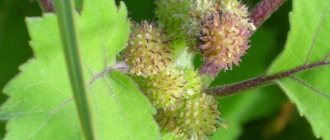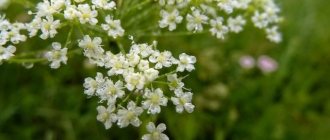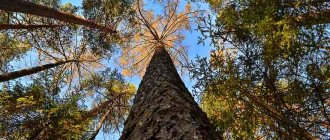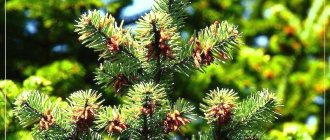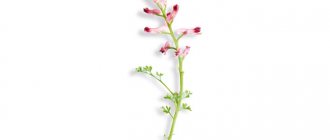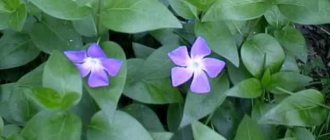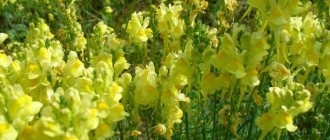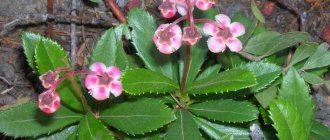Common cuff (bear's paw, heavenly dew, female grass, breastfeeding, rue, tripericum, dewberry, malady - a perennial creeping herbaceous plant from the Rosaceae family. It has long been used for diabetes mellitus, bronchopulmonary pathologies and women's diseases, and is popularly believed to be outwardly inconspicuous The plant heals many ailments.
Distributed throughout Europe, eastern Africa, North America, Greenland and in places in Asia. It is found almost everywhere in Russia, with the exception of the southernmost regions. Prefers meadows and forests (pine and mixed), found along roadsides, in arable lands, near swamps.
The medicinal properties and contraindications of the cuff have been studied quite well today. The mantle plant has found use in official and folk medicine, but, in addition to medicinal purposes, young leaves are used for food: added to green cabbage soup, salads, and pickled for future use. In Armenian cuisine, cuff is the main component of a signature soup consisting of the herb and its decoction, as well as pomegranate seeds.
Morphological description
The stem is branched, reaches a height of 30-40 cm, rises above the ground or is erect.
The lower leaves are kidney-shaped, dissected almost to the middle into 7-11 concave lobes. Stem leaves are sessile or short-petiolate. The venation is radial, the edges of the leaves are wavy.
The leaves have a palmate structure and a memorable rounded shape, reminiscent of a cuff with edges and wavy edges. In the early morning, droplets of moisture can be seen on the leaves, which some confuse with dew.
In fact, this is excess moisture that the plant itself releases. It is believed that this moisture perfectly rejuvenates and tones the skin, prevents aging: you can drink it, or use it instead of tonic.
The flowers are small, inconspicuous, yellow-green, collected in false umbrellas in large numbers. Flowering occurs over a long period, from June to September.
Collection and preparation
The plant is harvested during the flowering period, i.e. in fact throughout the summer. Collect after the leaves are dry from moisture. For medicinal use, the entire aerial part with root leaves is harvested and dried in a ventilated room or under a canopy in the open air. If the weather is bad, you can dry it in dryers at a temperature of no more than 60 degrees. The finished raw materials have a bitter, tart taste.
Cuff grass is stored in glass jars or bags for 12 months - during long-term storage the raw material becomes very bitter.
Medicinal use
It is recommended to harvest all parts of the plant during flowering. The collected raw materials should be dried outdoors in the shade, or in attics and in rooms with good ventilation. A special dryer or Russian oven will help you dry quickly (dry at a temperature of no more than 60 °C). It is not recommended to store dried cuff branches for more than a year.
Medicines from the cuff have anti-inflammatory, astringent, expectorant, wound-healing, diuretic and lactogenic effects. Regular ingestion of an infusion of leaves leads to a decrease in cholesterol levels in the blood. In gynecology, the cuff is used as a hemostatic, normalizes the menstrual cycle, and helps in the treatment of the female genital area
External use of cuff preparations: for furunculosis, ulcers, long-term non-healing purulent wounds, acne, dislocations, sprains, tumors, scrofula; ingestion: for atherosclerosis, colds, severe runny nose, nosebleeds, acute and chronic bronchitis, gastritis, gastric and duodenal ulcers, colitis accompanied by diarrhea, enteritis, diabetes, kidney and bladder diseases, epilepsy, obesity, etc. d.
History, popularization and scientific research
Ancient alchemists attributed magical properties to the plant and used “heavenly dew” (moisture that collects on the leaves) as an elixir of life. With the help of the same dew, ancient scientists tried to create a “philosopher’s stone”.
In Western Europe during the Middle Ages, the plant was also credited with witchcraft powers; it was believed that dew could restore youth and beauty. This tradition is still preserved in Switzerland - acne and freckles are removed by wiping the face with dew, and older ladies use the moisture of the plant to rejuvenate the skin.
- The healing properties of the plant have been known in Rus' for centuries. Traditional healers in the southern regions of our country still prepare an infusion of the plant using high-quality grape wine and use it for dropsy, diarrhea, heart pain, and bronchopulmonary diseases. Plant preparations are actively used to treat female diseases.
- Cases have been described that plant preparations cured pulmonary tuberculosis due to the activation of metabolism, which accelerates the healing of cavities.
- In German folk medicine, infusions of the cuff are used for malaria, diabetes, atherosclerosis, anemia, rheumatism, colic, dropsy (ascites). During pregnancy, for the normal course of childbirth, a month before the expected due date, German healers recommend taking half a glass of infusion of the leaves of the plant 3 times a day. And the same recipe is recommended for newlyweds planning a child (similar to how we take folic acid).
- In studies by herbalist, Doctor of Medical Sciences O.D. Barnaulov, the feasibility of using cuff preparations for dysmenorrhea was proven.
- During experimental studies by scientists from the Novosibirsk State Scientific Center for Virology and Biotechnology “Vector”, it was proven that drugs based on the cuff are active against influenza viruses.
- The antioxidant, regenerative, wound-healing, and vascular-strengthening properties of the cuff are protected by patents from the Laboratory of Phytochemistry of the Central Botanical Garden of the Siberian Branch of the Russian Academy of Sciences, located in Siberia.
The common cuff is not one of the pharmacopoeial plants of Russia, but has found wide use in folk medicine and homeopathy. Included in the European Pharmacopoeia, as well as the British Herbal Pharmacopoeia.
Effects on herpes simplex virus
According to the results of an experiment by scientists from the Central Siberian Botanical Garden of the Siberian Branch of the Russian Academy of Sciences and the Federal Budgetary Institution of Sciences State Scientific Center VB "Vector" of Rospotrebnadzor, preparations obtained both from the roots and from the above-ground organs of the cuff vulgaris had an antiviral effect against the herpes simplex virus types HSV-1 and HSV-2 .
Inhibition of both types of HSV occurred when this extract from the roots of the mantle was added simultaneously with infection of cells in vitro or one hour after it: at the stages of adsorption, penetration and “undressing” - the release of infectious nucleic acid from the viral envelope. When this drug was added between 3 and 24 hours after infection, there was no cell suppression—meaning the sample only works in the early stages.[5]
Chemical composition and pharmacological properties
The plant has a unique chemical composition:
- tannins (tannins) up to 3% in the aerial parts, and up to 8% in the roots;
- bitterness;
- lipids (fatty acids);
- phytosterols (steroids);
- coumarins;
- ellagic, oleic, linoleic and luteonic acids;
- catechins;
- lecithin;
- lignin;
- flavone glycosides;
- leukoanthocyanidins;
- ascorbic acid (in leaves up to 200 mg);
- micro- and macroelements (manganese, zinc, boron).
The following substances are of greatest pharmaceutical importance:
- Steroids (phytosterols) have a progesterone-stimulating effect. Regulate metabolism, normalize myocardial and vascular function, increase immunity. Progesterone-stimulating properties are found to be of greatest importance in gynecology: steroids normalize the menstrual cycle and help in the treatment of a wide range of diseases of the female genital area. Helps increase activity, mental and physical.
- Bioflavonoids have a powerful antioxidant effect and have pronounced activity against influenza viruses. Inhibit the action of enzymes that destroy vital hyaluronic acid.
- Lignin has an antioxidant and detoxification effect, removes toxins, heavy metal salts, various microorganisms and some types of fungi from the body.
- Coumarins accelerate wound healing.
- Ascorbic acid participates in the normalization of the central nervous system and immune system, stimulates the activity of the endocrine glands, normalizes hematopoietic processes, and strengthens the walls of blood vessels.
- Phenolcarboxylic acids accelerate the resolution of inflammatory processes, especially active in diseases of the digestive system. Activate kidney function.
- Tannins reduce capillary permeability and prevent vasoconstriction and have astringent properties.
- Fatty acids are involved in the construction of cell membranes.
- Coumarins inhibit the growth of cancer cells and accelerate wound healing.
- Leukoanthocyanidins help prevent Alzheimer's disease, normalize metabolic processes, preventing the development of diabetes mellitus.
- Bitterness stimulates the production of bile acids and gastric juice and improves digestion.
Medicinal properties of mantle grass
The plant has astringent, hemostatic, wound healing, disinfectant, anti-inflammatory and diuretic properties, dilutes viscous sputum in dry, painful coughs. Stabilizes hormonal levels, is used to enhance lactation of young mothers, rejuvenate the skin and body. It has a beneficial effect on the heart muscle and is considered effective in preventing heart attacks.
Since ancient times, and even now, the cuff is used for the following diseases:
- digestive system: ulcerative lesions of the gastrointestinal mucosa, dyspepsia, decreased peristalsis, cholecystitis, inflammatory diseases of the bile ducts and liver, colitis and enterocolitis, diarrhea;
- respiratory system: laryngitis, bronchitis, pneumonia, pulmonary tuberculosis and other diseases in which sputum discharge is difficult;
- urinary system: cystitis, ascites;
- metabolism: gout, diabetes, obesity;
- heart and blood vessels: hypertension, atherosclerosis, thrombophlebitis, anemia, nasal and internal bleeding, hemorrhoids, varicose veins;
- skin diseases: eczema, burns, wounds, especially difficult to heal, acne, ulcers, pustular rashes;
- gynecological diseases: dysmenorrhea, inflammatory lesions (vaginosis and vaginitis), used for menopause, heavy menstrual bleeding.
- connective tissue pathologies: rheumatism;
- diseases of the nervous system: insomnia, neuroses.
Pharmaceutical preparations with a common cuff
The plant is included in many dietary supplements, herbal preparations and balms.
Grass cuffDry vegetable raw materials with a wide range of applications. Used to prepare medicinal decoctions and infusions. |
Elixir GinexA multicomponent homeopathic medicine that is used for diseases of the spleen, pancreas, stomach, hormonal imbalances and gynecological diseases, during menopause in women, as well as for hair loss. It is an effective drug for the prevention of breast and uterine cancer. |
GyneconormHerbal phytocapsules, which are prescribed for menstrual irregularities, uterine fibroids and myomas, cervical erosion, infertility, painful menstruation, uterine bleeding, cystitis, pyelonephritis. |
Contraindications
When wondering when cuff grass helps, you should not forget about contraindications. For example, it is not recommended to use a cuff for treatment of increased blood clotting. Because the properties of the plant will only aggravate the situation.
Contraindications also include:
• Early pregnancy (from the third trimester, use of the cuff is allowed only as prescribed by a doctor);
• Lactation period (breastfeeding);
• Children under 12 years of age.
No particular side effects were identified after taking the plant. In some cases, there may be signs of a minor disorder in the gastrointestinal tract, loose stools and a slight feeling of nausea. This side effect indicates an excessive dosage that needs to be reduced.
Traditional medicine recipes
Herbal infusion
1 tbsp. a spoonful of raw materials is brewed with 200 ml of boiling water, left for 4 hours and filtered.
Externally used in the form of compresses, lotions and for washing long-term non-healing ulcers and wounds, for treating skin with juvenile acne. Add to bathing water and use to rinse the throat, nose and mouth. Sterile tampons are also soaked in the infusion and carefully inserted into the anus for hemorrhoids.
Internal use: half a glass three times a day before meals. Used for nasal and internal bleeding, heavy menstruation, inflammatory diseases of the respiratory system, high blood pressure. It is also prescribed as an astringent and anti-inflammatory drug for disorders of the digestive system, peptic ulcer of the duodenum and stomach. When combined with physical activity, it is recommended for weight loss.
Infusion of fresh flowers
1 tbsp. fresh flowers brew 1 tbsp. boiling water, leave for 60 minutes and filter. Recommended for bleeding of various origins, including heavy menstruation.
Alcohol tincture
Take 0.5 liters of alcohol and 50 grams. herbs, mix and place in a dark place for 2 weeks.
Internal intake: 1 tsp. half an hour before meals for diseases of the digestive and urinary systems.
Decoction
3 tbsp. raw materials are poured with 500 ml of water and boiled for 10 minutes over low heat, filtered.
Externally used for poorly healing ulcers, wounds, bleeding in the form of cold compresses, and for inflammatory eye diseases in the form of lotions. Used in the form of lotions to treat cellulite.
Internal intake: 50 ml per day for peptic ulcers of the digestive tract, colitis, diabetes mellitus, as well as to normalize the functioning of the nervous system and treat insomnia.
Fresh Juice
Young leaves and shoots are washed with water, crushed and the juice is squeezed out of them. Take 1 tsp. every 2 hours for diarrhea and dysentery.
An ancient recipe for grape wine decoction
Take 15 grams. dry raw materials and pour half a liter of red grape wine, cook over low heat for 3-5 minutes, leave for 1 day, filter.
Internal reception: 1-2 tbsp. l before meals three times a day for lung diseases with difficult to remove sputum, tuberculosis, chronic cough, dropsy, diarrhea, heart pain, atherosclerosis, reduced metabolism.
Porridge for the treatment of inflammatory skin diseases
Fresh crushed leaves are placed in a sterile bag and applied to the wounds. If there is no fresh herb, you can use dry raw materials, which are pre-steamed with a small amount of boiling water.
Fresh leaves
help with skin diseases, furunculosis, ulcers, purulent and long-term non-healing wounds, and bruises. Heated leaves help with sprains (used as a poultice).
Vitamin salad
Young leaves are placed in boiling water for 1-2 minutes, then placed in a colander and watered with cold water. Add young onions, sorrel, spinach to the leaves and season to taste.
Cuff grass and its uses
How to take the cuff (rosnik)? The use of cuffs in folk medicine is popular in the treatment of various diseases. The pulp obtained by boiling the leaves of the plant is applied as a compress to the problem area. Promotes wound healing, reduces various inflammatory processes, skin rashes and acne. When the leaves are applied to abscesses and suppurations, it acts like plantain, drawing out pus and speeding up the healing process. The healing properties of the cuff are effective for itching, eczema and scabies.
Water decoction
To obtain a standard decoction, take 4 teaspoons. leaves and cook in a quarter liter of water for 5 minutes after boiling.
The common cuff is also called gourd, because its decoction helps with throat ulcers, problems with the upper respiratory tract and bronchitis, due to its expectorant effect.
